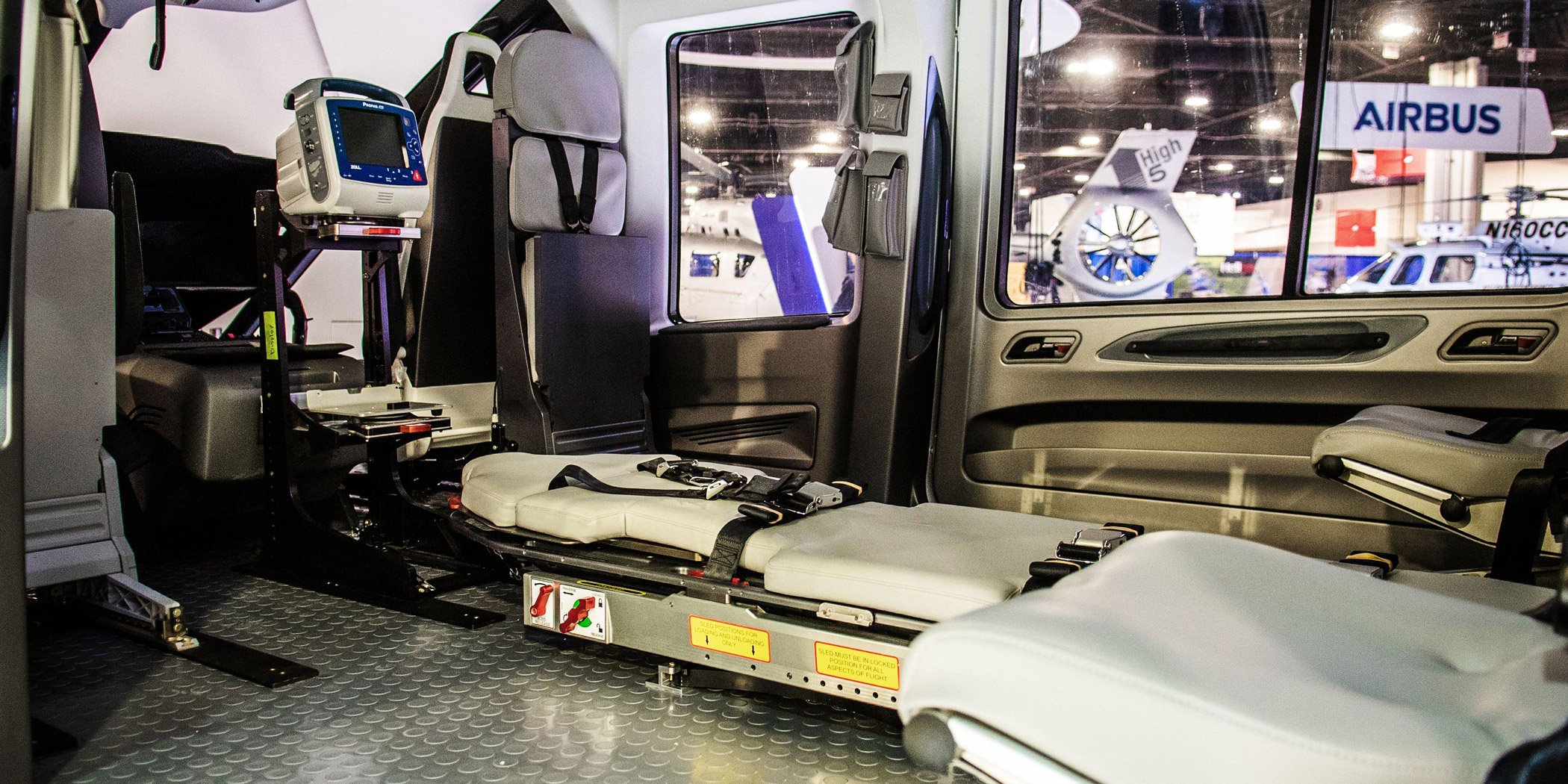Click Here to View This Page on Production Frontend
Click Here to Export Node Content
Click Here to View Printer-Friendly Version (Raw Backend)
Note: front-end display has links to styled print versions.
Content Node ID: 400266
The helicopter emergency medical services (HEMS) industry is tough and getting tougher with proposed new restrictions on patient billing, pilot and mechanic shortage woes, and the overall expense of operating helicopters continually rising. But Shreveport, Louisiana-based Metro Aviation (Booth 3624), which is celebrating 38 years in the helicopter transportation business, has managed to thrive in this environment through carefully controlled growth and diversification.
As a HEMS provider, Metro Aviation operates more than 140 aircraft for approximately 35 customers across the country. As a completions center, the company holds more than 30 Supplemental Type Certificates (STC) and completes about 35 aircraft each year for U.S. customers and global clients. As a facility called Helicopter Flight Training Center (HFTC), Metro provides pilot training and check rides in level D full-motion simulators, plus technician and air medical communication specialist training.

Metro boasts that it has completed more EC135s and EC145s than any other completion center in the world. Recently, however, Metro has focused on the EC145e variant, serving as the model’s launch customer with a 25-ship order in 2018 and receiving the first EC145e produced in the U.S. in September 2019. Partnering with Genesys Aerosystems, Metro developed an STC’d Single Pilot/Dual Pilot IFR (SP/DPIFR) avionics package for the EC145e, as well as air medical and utility configurations.
While the EC145e light twin has the same maximum takeoff weight (7,903 pounds) as the EC145C2, its useful load is increased by as much as 330 pounds VFR or 270 pounds IFR. Metro Aviation’s SPIFR configuration includes a Garmin G500H and GTN 650/750 navigation and communication system, and a two-axis HeliSAS autopilot. The DPIFR configuration includes a Genesys Aerosystems 3D Synthetic Vision System EFIS (electronic flight instrument system). The SP/DPIFR configuration incorporates a GPS-SBAS Flight Management System (FMS) including VNAV, LPV, and other functions; helicopter terrain awareness and warning system (HTAWS); the Genesys 3D SVS; and an HSI and navigation display for VOR, ILS, GPS, and more.
As of November 2019, Metro had completed eight EC145e aircraft for EMS customers and obtained orders for six more during the 2019 Air Medical Transport Conference (AMTC). The company is also working on an STC for the Stryker Performance Pro ground ambulance stretcher.
Metro provides pilots and maintenance technicians for HEMS programs in 22 states and the District of Columbia. Its clients, including hospitals and first responders, can use the company’s MetroAlert app to reduce response time by up to five minutes. The app instantly notifies a Metro Aviation base and sends GPS coordinates through an encrypted SSL transmission. First responders receive real-time updates on the estimated arrival time of the aircraft, and communication center personnel can add other users to active transports, such as a cardiologist or ER doctor. App users can also send photos of the scene or patient securely without the photos being saved on the mobile device.
Reportedly the first air medical provider to equip its entire fleet with night-vision goggles and to require all pilots to be IFR qualified and current, Metro provides annual simulator IMC training at HFTC. Located on the Metro campus, HFTC’s 38,500-square-foot training center houses the company’s FAA-approved level D Airbus EC145 and EC135 full-motion simulators, and AS350 and Bell 407/407GX level 7 flight-training devices. Customers who wish to use their own instructors can dry lease HTFC simulators. Factory maintenance training from various engine manufacturers is also available.
HFTC also offers training for air medical communication specialists in its CommLab. Connected to the in-house flight simulators, the CommLab provides realistic training scenarios such as inter-facility and scene transfers, bird strikes, neonatal transfers, multiple aircraft requests, misinformation and changing landing zones, IFR conditions, and more.